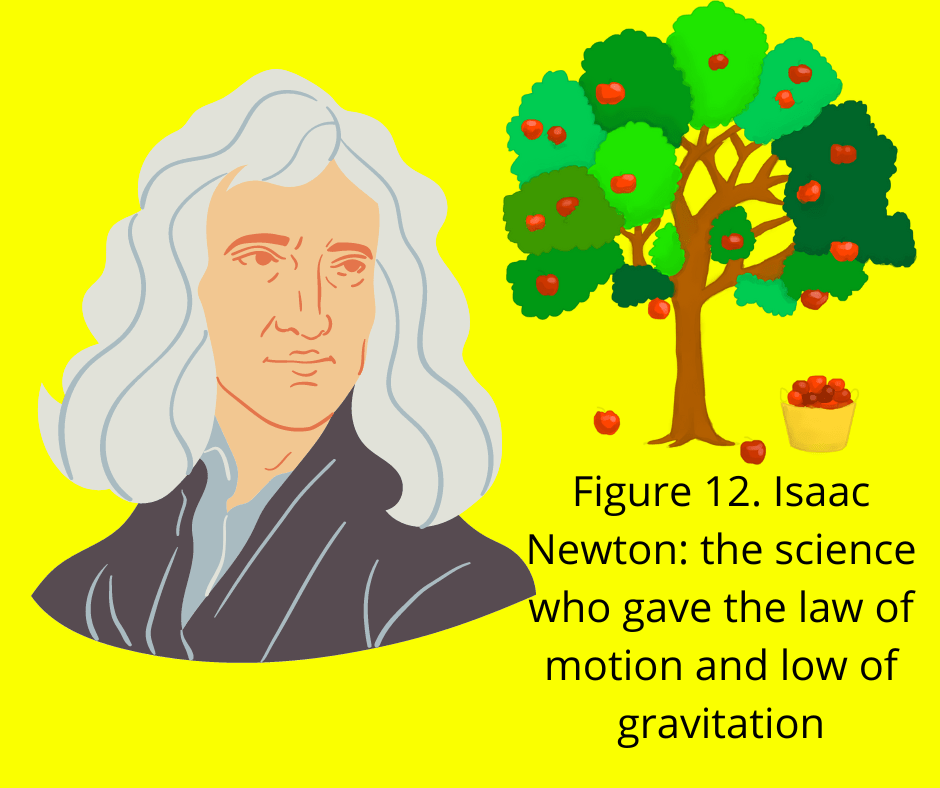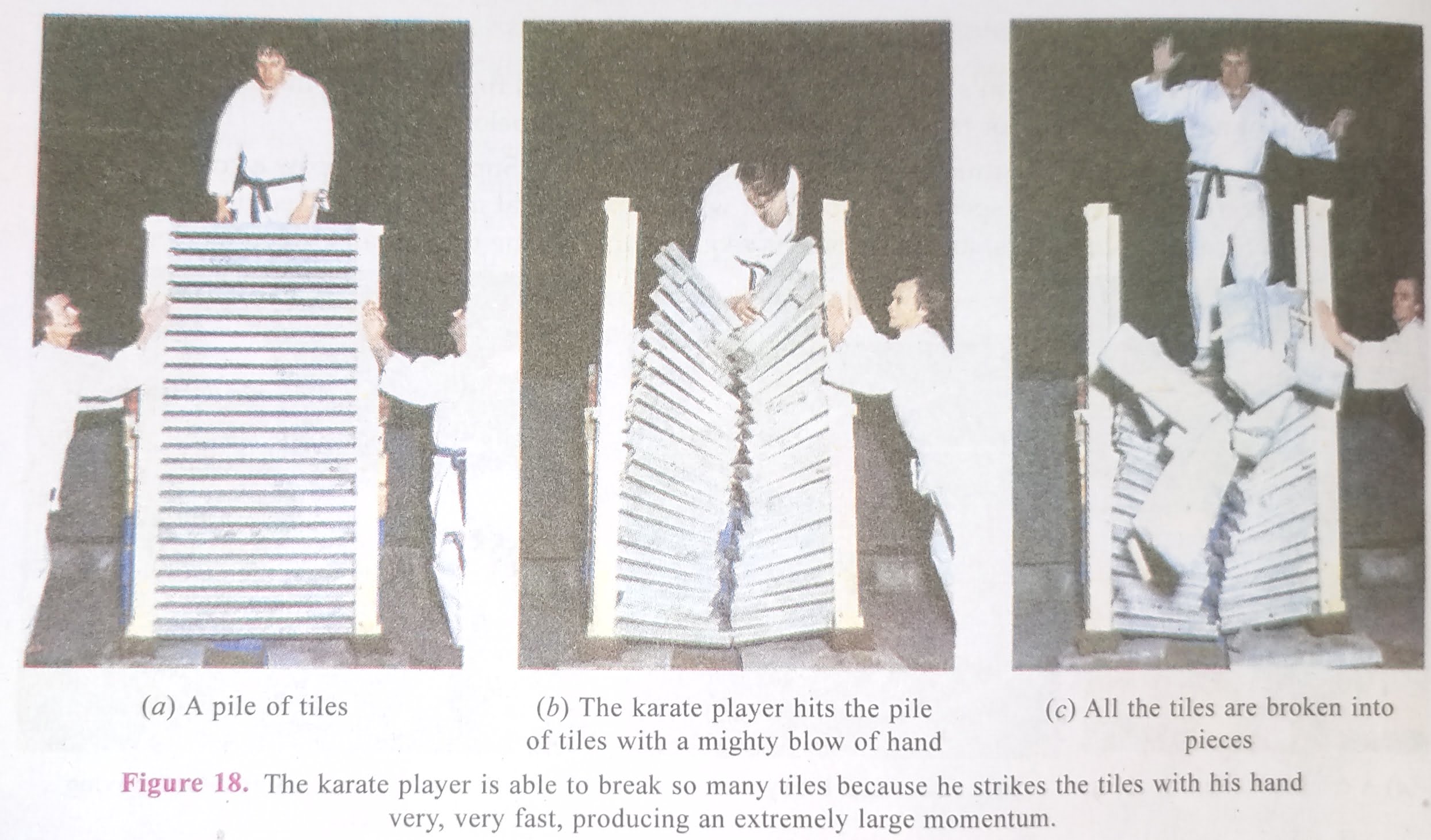NEWTON’S LAWS OF MOTION
Newton has given three laws to describe the motion of bodies. These laws are known as Newton’s laws of motion. The Newton’s laws of motion give a precise definition of force and establish a relationship between the force applied on a body and the state of motion acquired by it. We will now discuss these laws of motion and consider some of their important applications. Let us start with the first law of motion.

NEWTON’S FIRST LAW OF MOTION
Some of the bodies ( or objects ) around us are at rest , that is , they are stationary , whereas others are in motion . Newton’s first law describes the behaviour of such bodies which are in a state of rest or of uniform motion in a straight line . According to Newton’s first law of motion : A body at rest will remain at rest , and a body in motion will continue in motion in a straight line with a uniform speed , unless it is compelled by an external force to change its state of rest or of uniform motion . It should be noted that by saying an external force , we mean a force from outside the body . Let us take some examples to make the first law of motion more clear . Suppose a book is lying on the table . It is at rest . The book will not move by itself , that is , it cannot change its position of rest by itself . It can change its state of rest only when compelled by the force of our hands , that is , when we lift the book from the table . Thus , the position of rest of the book has been changed by the external force of our hands . And this observation supports the first part of the first law of motion .
The tendency of a body to remain at rest (stationary) or, if moving, to continue moving in a straight line, is called inertia. Newton’s first law recognizes that every body has some inertia. Inertia is that property of a body due to which it resists a change in its state of rest or of uniform motion. Greater the inertia of a body, greater will be the force required to bring a change in its state of rest or of uniform motion. In fact, mass is a measure of the inertia of a body. If a body has more mass, it has more inertia. That is, heavier objects have more inertia than lighter objects. For example, a stone has greater inertia than a football. If we kick a stone, it will not move because of its high inertia but if we kick a football, it will move a long way.
Thus, a stone resists a change in its state better than a football does. So, a stone has more inertia than a football. Similarly, a cricket ball has more inertia than a rubber ball of the same size. A cricket ball has more inertia because it has more mass (it is quite heavy). On the other hand, a rubber ball has less inertia because it has less mass (it is quite light). Thus, the inertia of a body depends on its mass. For example, if a body has mass of 1 kilogram and another body has a mass of 20 kilograms, then the body having 20 kilogram mass will have more inertia. It is easier to move a body of mass 1 kilogram by pushing it (because of its small inertia) but it is much more difficult to move a body of mass 20 kilograms by pushing it (because of its very high inertia).

From the above discussion we conclude that to overcome the inertia and make a body move from rest, we must apply an external force. It should be noted that Newton’s first law of motion is also some times called Galileo’s law of inertia. We can illustrate the Newton’s first law of motion or the property of inertia of a body with a simple experiment described below.
We take a glass tumbler and place a thick square card on its mouth as shown in Figure 14(a). A coin is then placed above this card in the middle. Let us flick the card hard with our fingers. On flicking, the card moves away but the coin drops into the glass tumbler [see Figure 14(b)]. We will now explain how it happens.

Initially, both, the card and the coin, are in the state of rest. Now, when we hit the card with our fingers, a force acts on the card and changes its state of rest to that of motion. Due to this, the card moves away from the mouth of the glass tumbler. The force of our flick, however, does not act on the coin, so the coin continues to be in its state of rest due to its inertia. And when the card (on which the coin had been placed) moves away, the coin falls into the glass tumbler because it prefers to maintain its state of rest due to inertia.
We will now consider the second part of the first law of motion which says that a body in uniform motion will continue to move unless a force compels it to change its state of uniform motion in a straight line. At first sight it would appear to be wrong that a body moving at uniform speed in a straight line will continue to move for ever without coming to rest. Because, if we stop pedalling a bicycle, which is moving at a uniform speed, the bicycle does not go on moving for ever, it comes to rest after some time. The moving bicycle has been compelled to change its state of uniform motion by the external force of air resistance and friction. If there were no air resistance and no friction to oppose the motion of a bicycier then according to the first law of motion, a moving bicycle would go on moving for ever. It would not stop by itself.
We will now describe some everyday observations which are based on the property of inertia of a body (due to which it resists a change in its state of rest or of motion). When a hanging carpet is beaten with a stick, the dust particles start coming out of it. This is because the force of stick makes the carpet move to-and-fro slightly but the dust particles tend to remain at rest (or stationary) due to their inertia and hence separate from the carpet. When a tree (having flexible stem) is shaken vigorously, its fruits and leaves fall down. This is due to the fact that when the tree is shaken, it moves to-and-fro slightly but its fruits and leaves tend to remain at rest (or stationary) due to their inertia and hence detach from the tree and fall down.
We have seen that when a car or bus starts suddenly, the passengers fall backward. This is due to the fact that because of their inertia, the passengers tend to remain in their state of rest (or stationary state) even when the car or bus has started moving. When a running car or bus stops suddenly, the passengers are jerked forward because due to inertia the passengers tend to remain in their state of motion (which they possessed in a moving car or bus) even though the car or bus has come to rest. The seat belts are

provided in cars so that if a fast running car stops suddenly due to some emergency (or an accident), then the passengers are not thrown forward violently, and injury can be prevented. When a car or bus turns a corner sharply, we tend to fall sideways because of our inertia or tendency to continue moving in a straight line. It is dangerous to jump out of a moving bus because the jumping man, who is moving with the high speed of the bus, would tend to remain in motion (due to inertia) even on falling to the ground and get hurt due to the resistance offered by ground.
From the above discussion, it is clear that Newton’s first law of motion gives us a definition of force. It says that a force is something which changes or tends to change the state of rest or of uniform motion of a body. In other words, a force is an influence which can produce an acceleration or retardation in a body. Force is a vector quantity having magnitude as well as direction.
MOMENTUM
In order to understand Newton’s second law of motion, we should first know the meaning of the tert ‘momentum’ of a moving body (or moving object). This is discussed below.
We know that a cricket ball is much more heavy than a tennis ball. Suppose we throw a cricket ball and a tennis ball, both with the same speed or velocity. It will be found that more force is required to stop the cricket ball (which has more mass) and less force is required to stop the tennis ball (which has less mass).

We conclude that the force required to stop a moving body is directly proportional to its mass. Now, ir we throw two cricket balls of the same mass at different speeds or velocities, it will be found that more force is required to stop that cricket ball which is moving with higher velocity and less force is required to stop the cricket ball moving with lower velocity. So, we conclude that the force required to stop a moving body is also directly proportional to its velocity. Thus, the quantity of motion in a body depends on the mass and velocity of the body. This gives us another term known as “momentum”. The momentum of a body is defined as the product of its mass and velocity.
Thus, Momentum = mass x velocity
or p = m x v
where. p = momentum
m = mass of the body
v = velocity (or speed) of the body and
his hand. This is because a karate player strikes the pile of tiles or the slab of ice with his hand very, very It is clear that if a body is at rest, its velocity is zero and hence its momentum is also zero. Thus, the total momentum of the gun and bullet before firing is zero because their velocity is zero. Momentum is a vector quantity and takes place in the direction of velocity. We have just seen that, momentum = mass x velocity. Now, mass is measured in kilograms (kg) and velocity is measured in metres per second (m/s), so the SI unit of momentum is kilogram metres per second which is written as kg.m/s or kg.m s- ¹.
Every moving body possesses momentum. Since momentum depends on the mass and velocity of a hody so a body will have a large momentum: (a) if its mass is large, or (b) if its velocity (speed) is large, or (c) if both its mass and velocity (speed) are large. We will now discuss some everyday situations which invelve large momentum. A karate player can break a pile of tiles or a slab of ice with a single blow of his hand. this is because a Karate player strikes the pile of tiles or the slab of ice with his hand very, very

fast. In doing so, the large momentum of the fast moving hand is reduced to zero in a very, very short time. This exerts a very large force on the pile of tiles or the ice slab which is sufficient to break them apart.
Though a cricket ball is not very heavy but when it is thrown with a high speed (or high velocity),.it acquires a very large momentum and sometimes hurts the batsman. This is why a batsman often ducks to a bouncer. On the other hand, a car or bus may not be running at a high speed (or high velocity) but because of its high mass, it has a very high momentum which may hurt the person coming in its way. It is a common observation that road accidents at high speeds are very much worse than accidents at low speeds. This is because the momentum of vehicles running at high speeds is very high and causes a lot of damage to the vehicles and injuries to passengers during the collision. Thus, we are afraid of a moving cricket ball or a running vehicle because of the combined effect of their mass and velocity which is called momentum. From this discussion we conclude that the combined effect of mass and velocity of a body is taken into account by a physical quantity called momentum. In fact, momentum is considered to be a measure of the quantity of motion of a moving body. We can feel what momentum is if we happen to collide with a person running at top speed ! We will now solve a problem based on momentum.
Sample Problem. What is the momentum of a man of mass 75 kg when he walks with a uniform velocity of 2 m/s ?
Solution. We know that:
Momentum = mass x velocity
= m x v
Here, Mass, m = 75 kg
And,. Velocity, v = 2 m/s
Putting these values in the above formula, we get :
Momentum = 75 x 2 kg.m/s
= 150 kg.m/s
Before we go further and discuss newton’s second law of motion, please answer the following questions :
momentum = mass × velocity
= M × v
Here , Mass , m. = 75 kg
and, velocity, v = 2 m/s


Comments are closed.